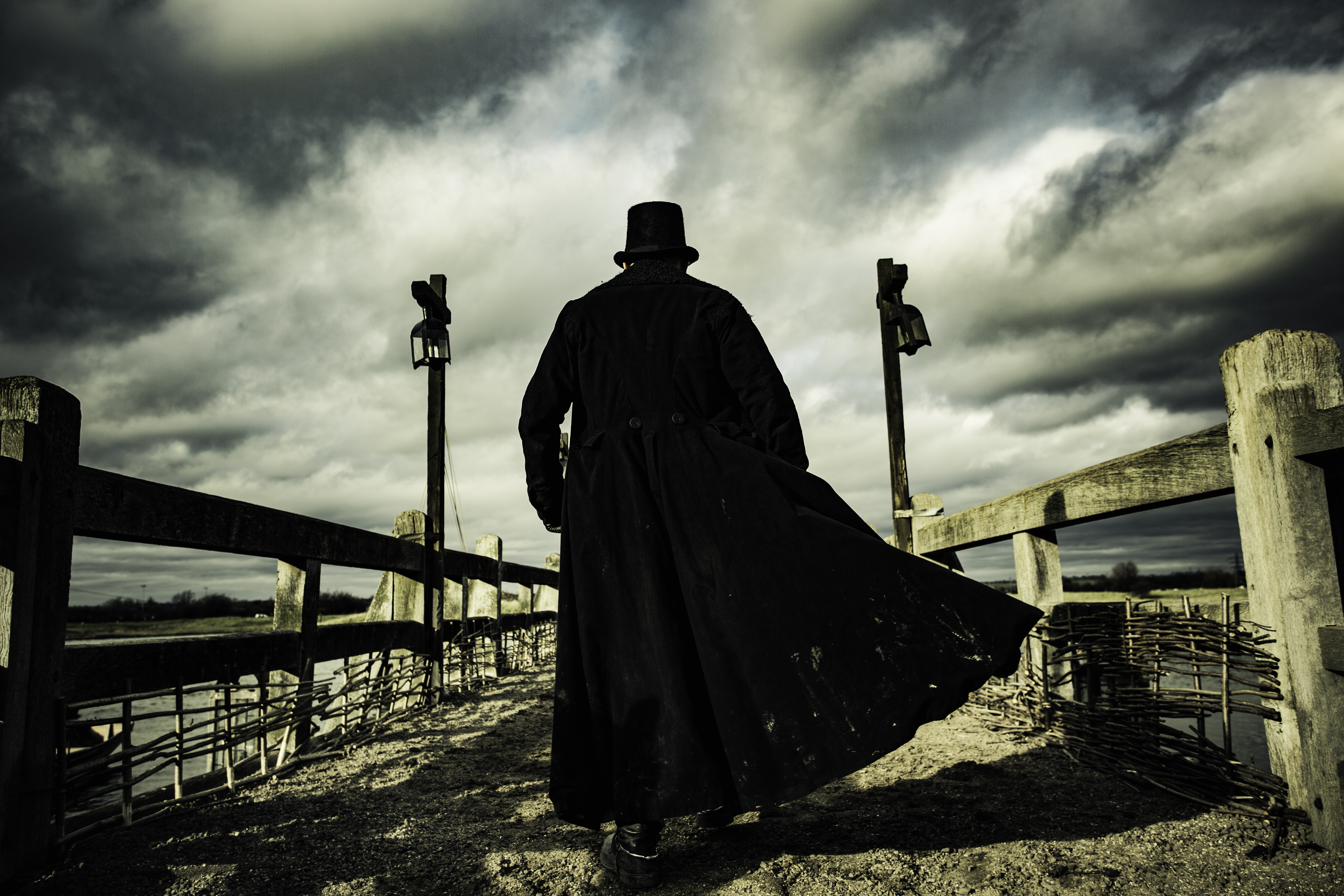A glorious sun beats down on the beautiful brow of Beau Brummell and the side streets are still the hold of royalty, the well-dressed and the fabulous. The popularity of TV’s Taboo has seen a surge of interest in the man who would be George IV and in London’s Regency period. Luckily its traces are still very visible if you know where to look…
George ruled as Prince Regent in his father King George III’s place as proxy monarch when George senior was considered unfit to govern, arguably owing to the taboo of mental ill health. George IV himself then ascended to the British throne in 1821. The Taboo television series focuses on this period in history, with the Regent played by the redoubtable Mark Gatiss. Taboo peppers its story with scoundrels and knaves enough to show just what pleasure – and pain – can be had when elegance comes into its own.
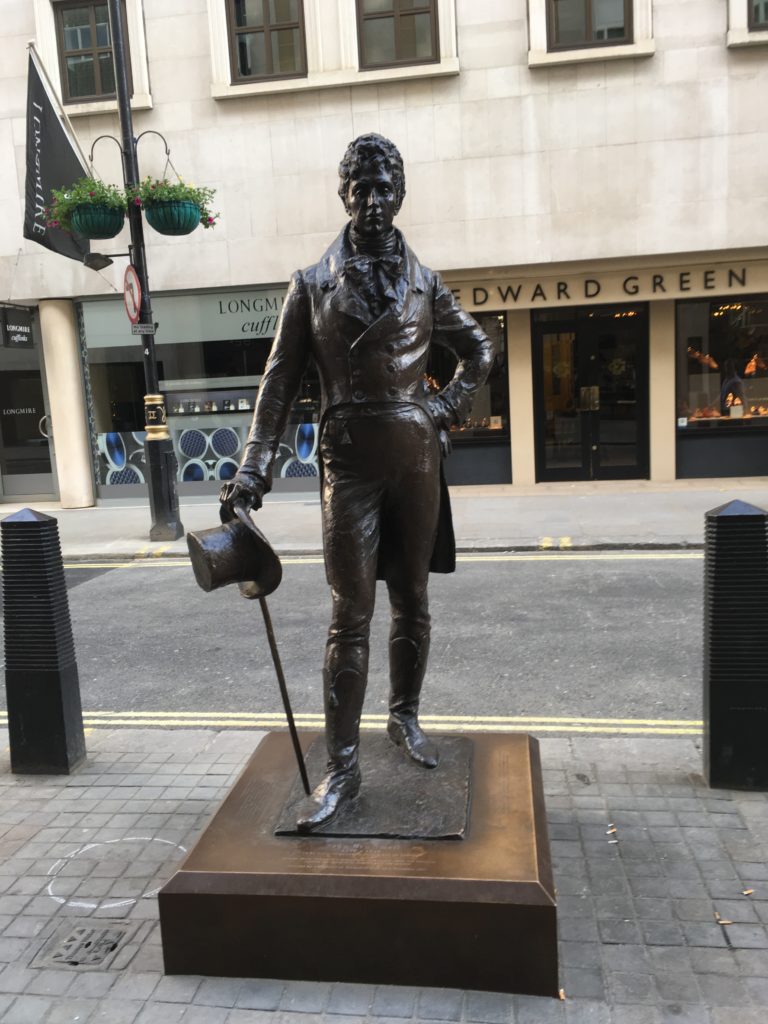
‘Prinny’ and bonny Beau
George was known as ‘Prinny’ by his subjects. As a younger man (prior to Gatiss’ portrayal), George was slim, his dress-sense lavish and he could be spotted roaming central London’s precincts to perfect his personal style. Guarded to this day by a statue of his style icon and friend Beau Brummell, Jermyn Street offers a retail stretch to match the gentleman’s heart’s desire. He could be anything he wanted, or indeed anything the ladies wanted – Brummell’s likeness stands resplendent in his ‘inexpressibles’.
Inexpressibles were trousers so tight and of such a faint hue that the slightest wink of interest towards a pretty face would result in an appreciative – and appreciable – wiggle of the John Thomas in the said ladies’ direction. It was scandalous, daring and so delightfully taboo that it was emulated about the town and incorporated into other aspects of these gentlemen’s lives. Perhaps to cover more voluminous blushes, he could then take his choice of ‘toppers’ from James Lock & Co, the world’s oldest milliners. If more masking is needed, it is rather heartening to know that there remain shops specialising in shaving equipment to ensure those sideburns remain on fleek. Such establishments still don’t mention their costs in their windows – for the truly debonair, money is no object.
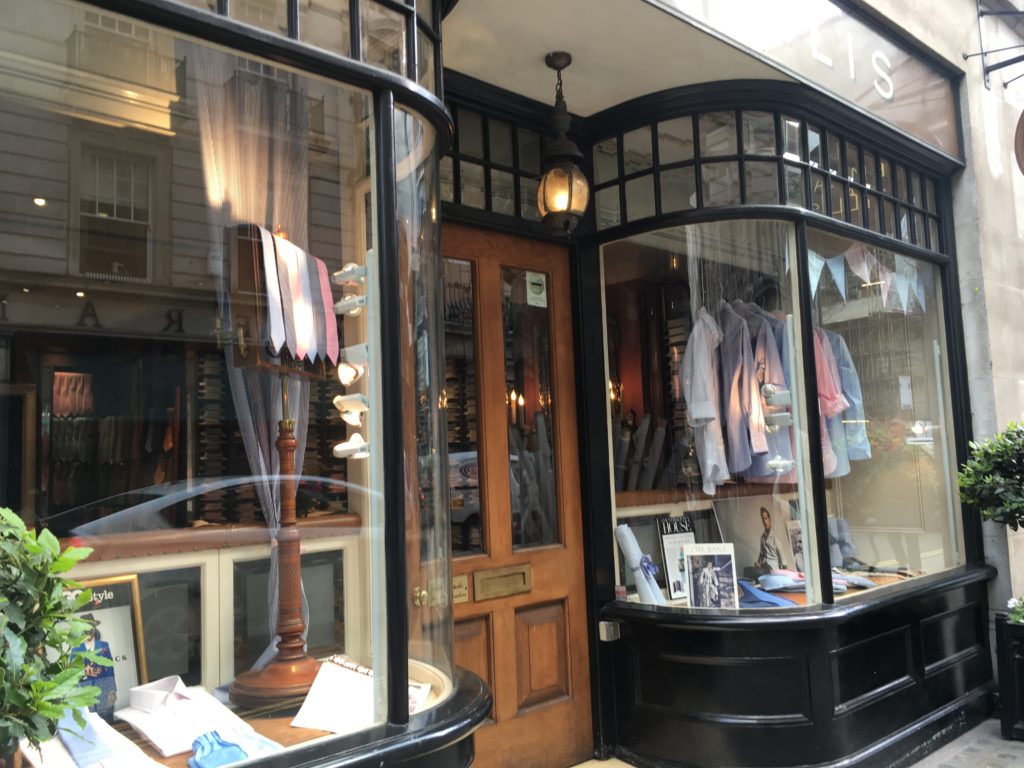
Delaney’s Fight Club
Taboo tips its well-heeled shoes into a seedier underbelly than the Royals would have (publicly) dared enter, so as tour guide Delianne Forget explains, it falls to James Keziah Delaney (Tom Hardy), the story’s hero, to have the real fun. Private clubs were aplenty. Delaney could gamble on something as inconspicuous as the speed of raindrops down a window pane in Brooks’s (as they prefer to be known) of St James’s Street. Should gambling over precipitation feel a trifle trivial, however, he could bet or remove his finery and flail his fists to win at Tom Cribb’s, one of London’s infamous bare-knuckle fighting clubs.
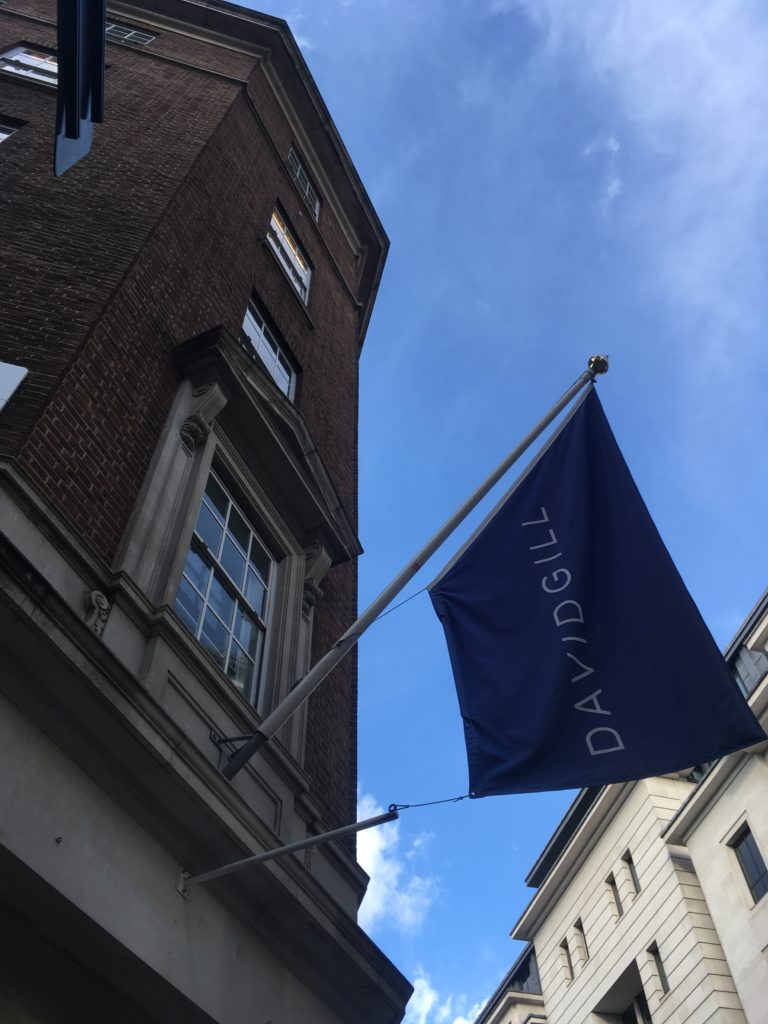
Rum deals and scarlet ladies
Should the feints be too little too late and blows landed, the sorrows and soreness could be drowned at a drinking den. Gambling debts were, after all, considered an ‘honour debt’ that had to be paid in full and a tavern in Crown Passage could offer commiserations. Still in existence today, the prostitutes of yesteryear have apparently moved on but it is still frequented by fashionable men and now also women about town often be-suited in the standard issue red or pink trousers.
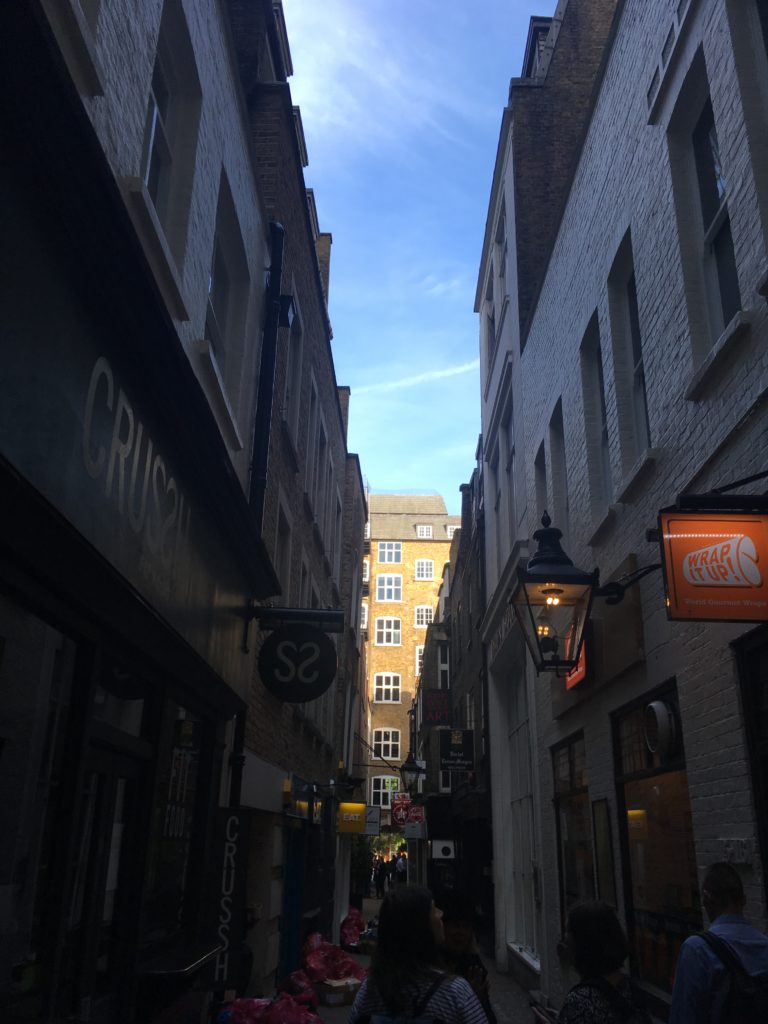
Those with such funds can still enter The Red Lion in search of ‘the finest wines known to humanity’ and perhaps the supposed secret passage leading directly to St James’ Palace while they’re there. It is, after all, where George was born.
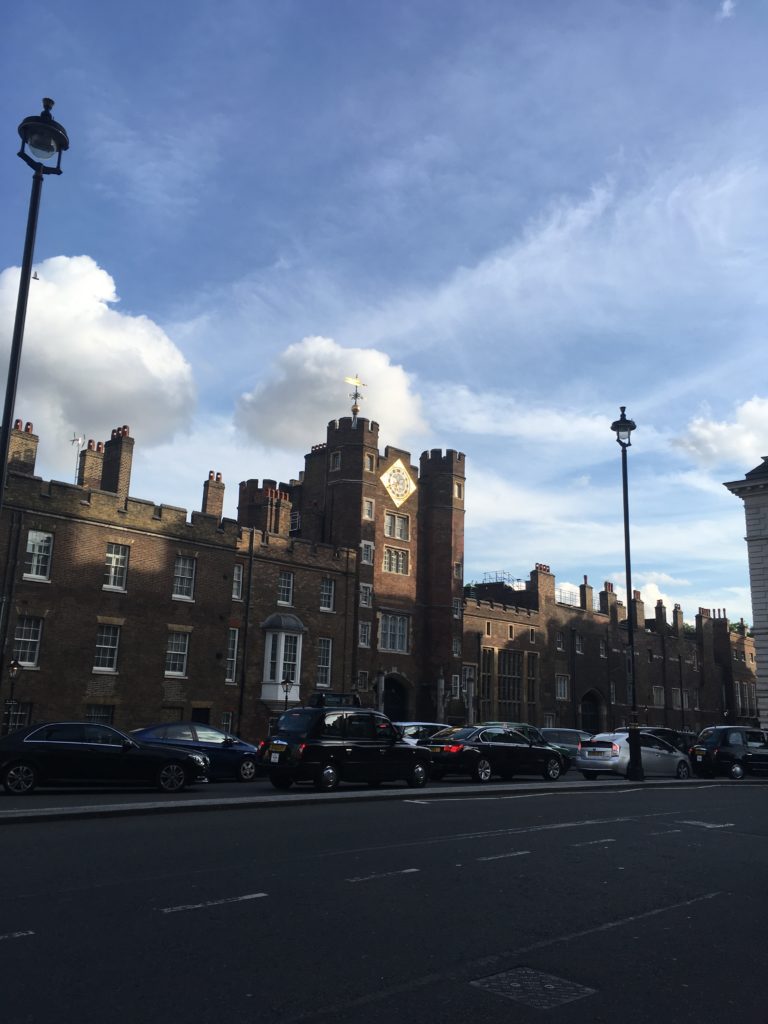
If one fancies taking home a nightcap, Berry Bros. and Rudd of Pall Mall (established 1698) would be of service. Once stock has been weighed on the scales as it would have been in the Regent’s day, one can still leave with a bottle worth from £5 to £5,000 and the knowledge that any hangover would be suitably kingly.
Helga von Hinten, Franke Potente’s brothel owner in Taboo is rather unlikely to be available, but specialist sex workers such as the famous Emma Hamilton, might, perhaps be separately engaged to sooth the historic lad to bed. Hamilton would do well from her endeavour, her services costing in the thousands. It was the release of Harriette Wilson’s memoirs (inclusive of bedpost notches and blackmail) that led one merry gent styled as the Duke of Wellington to declare the infamous phrase, “Publish and be damned”.
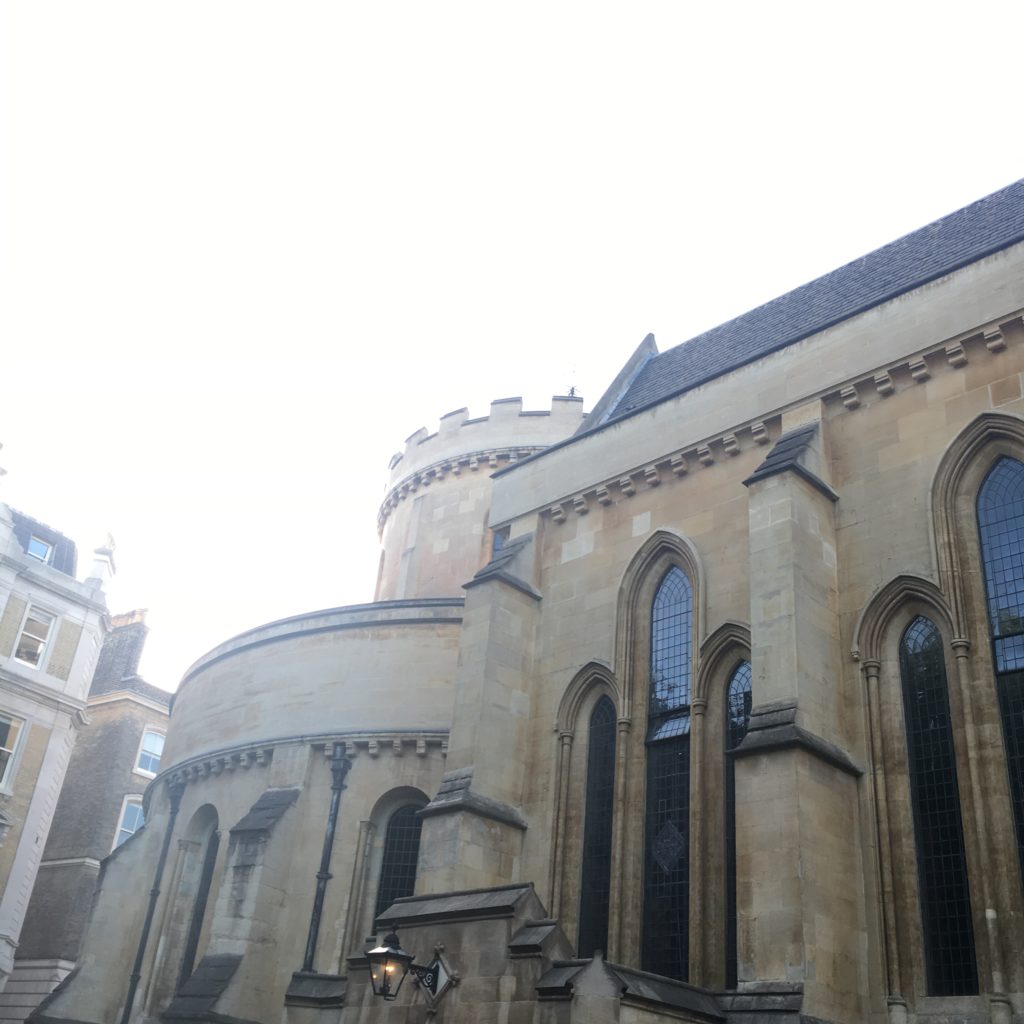
Templar knights and fishermen
It was not, however the case that people of honour were not to be found. The Middle Temple with its connection to Christian pilgrim protection Order, The Knights Templar, can still be found near Temple Station. Now a place of genteel grandiosity where students are called to the bar to practice law, the surrounding area has also been directly featured in Taboo as a filming location – a squint of the eye will place the series’ Lorna (Jessie Buckley) in one arched passage.
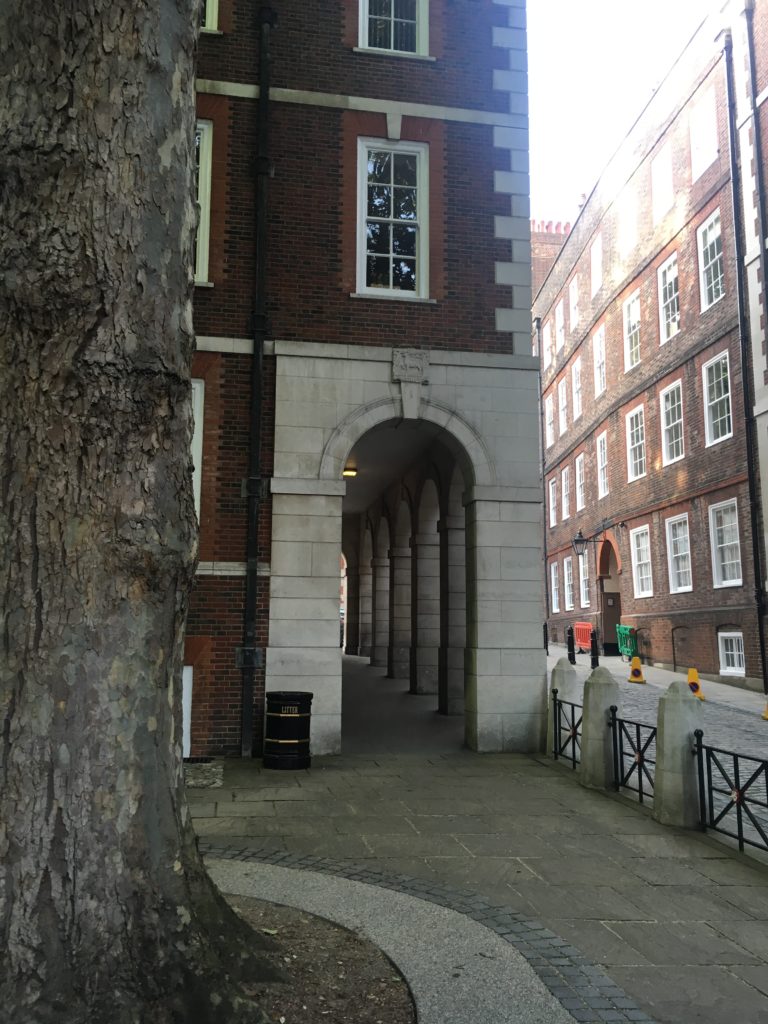
As any rapscallion knows, the law is not necessarily always that far behind however, though they would try to avoid it. The likes of Delaney would try to keep a bit of money back for themselves by making trade deals with the ships that dropped at the harbour as the tax further in town felt criminal in itself. That harbour area is now the almost suspiciously sleepy Wapping, apparent a celebrity haunt.
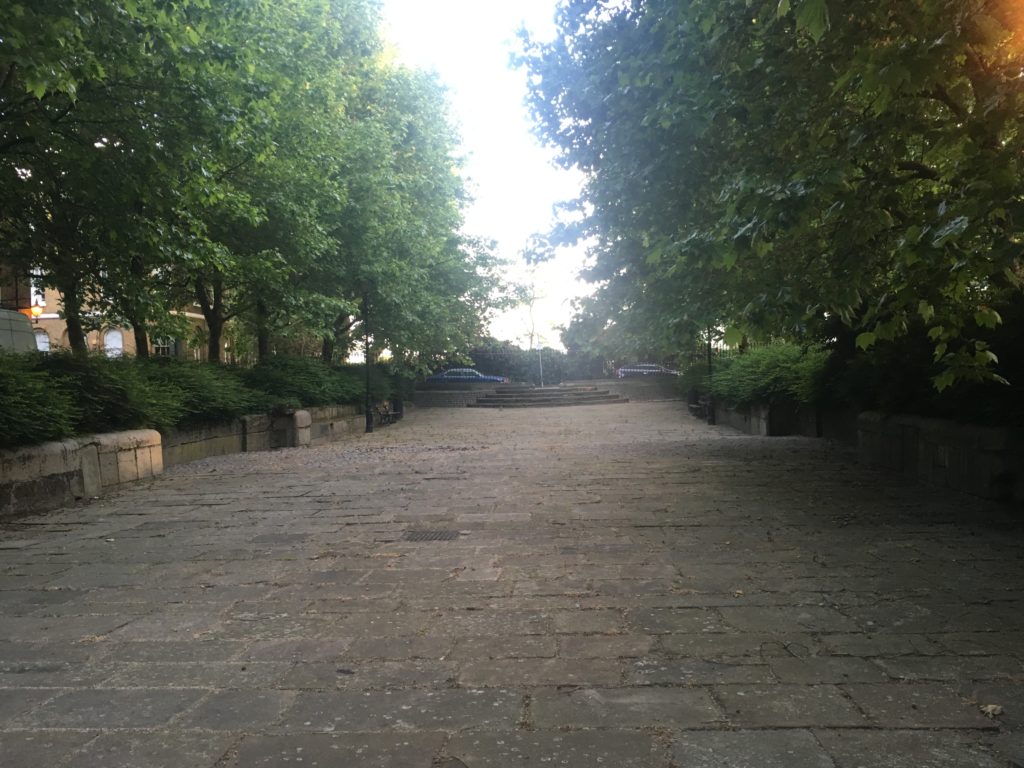
Delaney, death & liquor
Should Regency reprobates get caught for their deeds, however, it would be the hangman’s noose for them. Slip down the slime-sewn stairs hidden against the redeveloping shoreline around the area of Executioner’s Dock and you will find the place where men hung by the neck until dead.
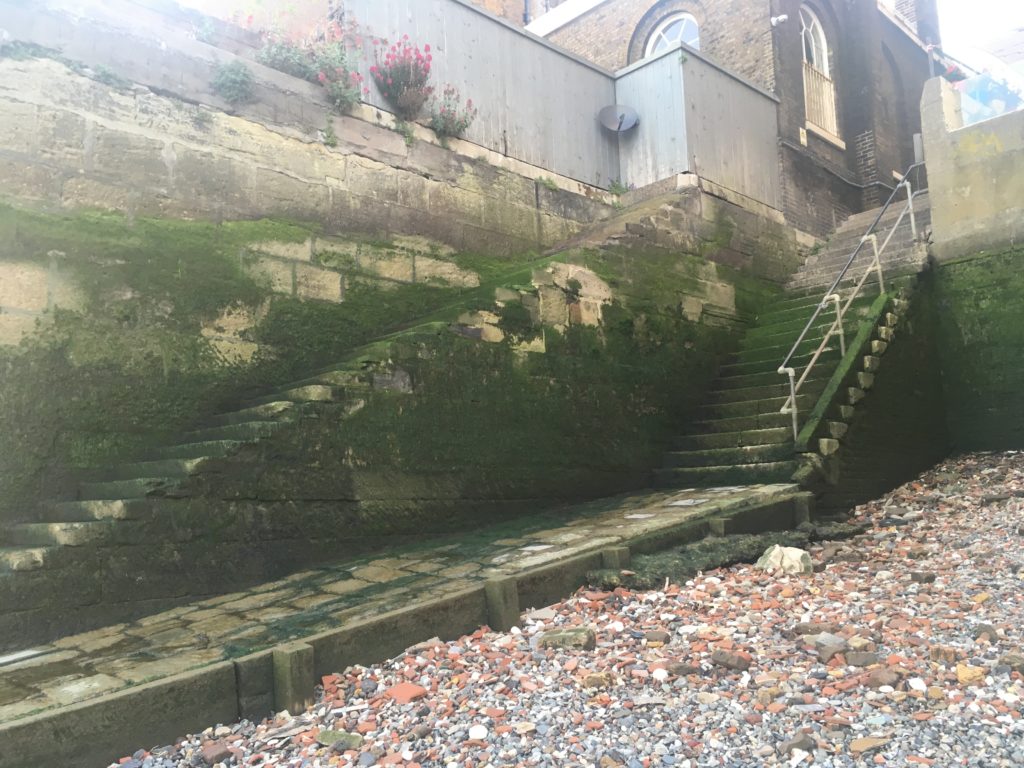
Traitors to the Crown, their short drop and sudden stop would be emphasised. To inflict maximum torment, they would simply be allowed to suffocate while jangling their bodies in the graceless, jigging clamour for air.
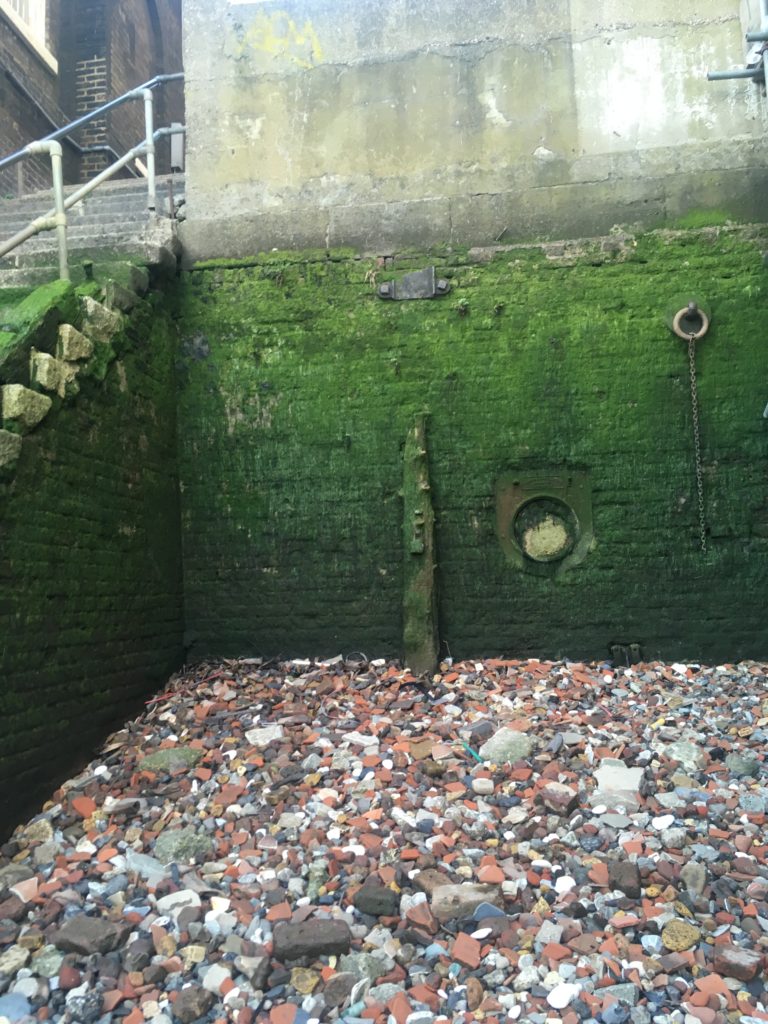
It sounds, and was considered, (un)delightful – one needs only mudlark on the pretty pebble beach for the evidence. Clam shells, some worn away by the tide, were a local fast food – great for quieting the gut while watching the garrotting.
Fragments of clay pipes smoked in those days have survived all these years kept in the secrets of the Thames’ sweet whisper. They wash ashore and lie in shock in the sun at the changed world. Sometimes the unwary may also find the fine finish of white glinting disconcertingly in their hands – the bones of beasts and those who can longer tell tales.
How many have died where the tourist absent-mindedly skitters pebbles into the murky tide? A Regency-style stiff drink to steady the nerves can be ordered in the above pub before retiring to relive the taboo, perhaps with a clam or two, with Delaney and company in the comfort of one’s own castle.
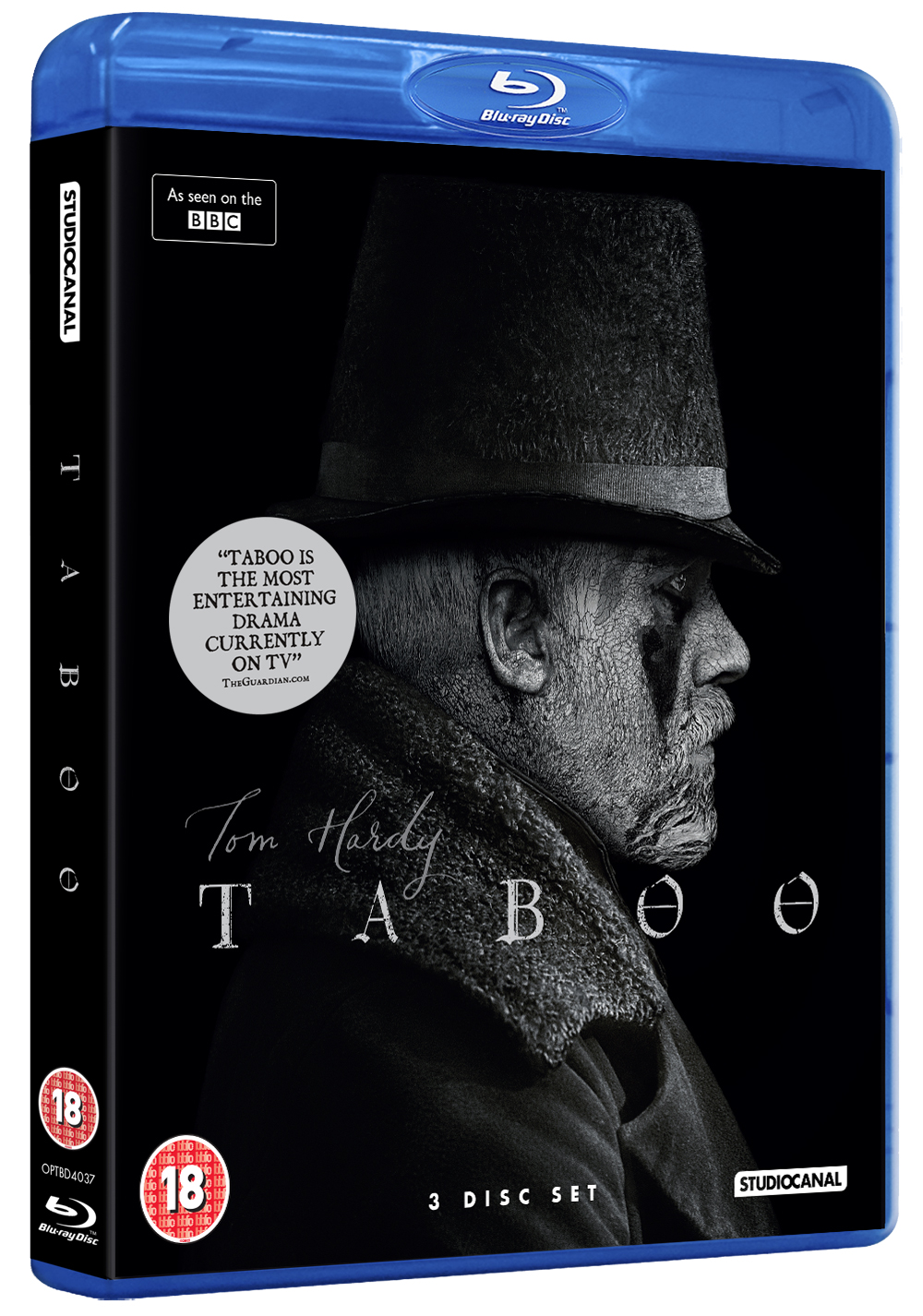
Taboo is out now on Blu-ray, DVD and Digital, courtesy of StudioCanal. The bespoke Taboo Regency Tour of London was curated by Blue Badge tourist guide Delianne Forget. For more on the dark side of history, subscribe to All About History from as little as £26.
